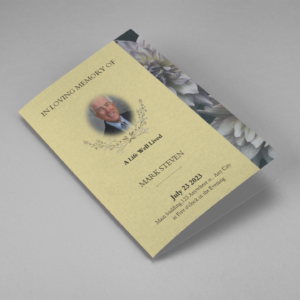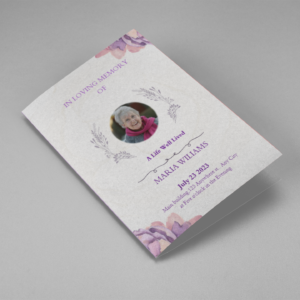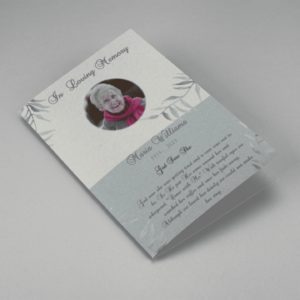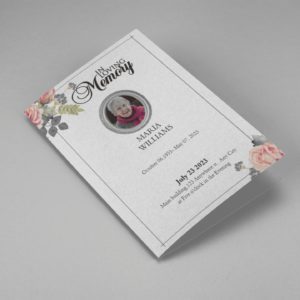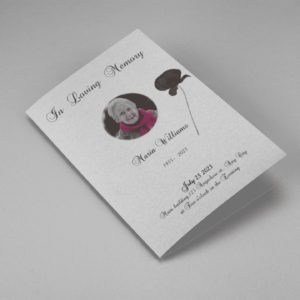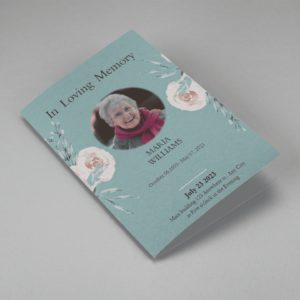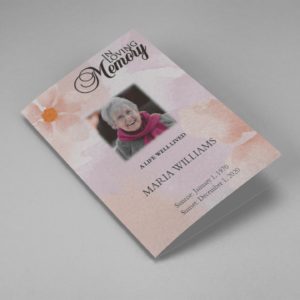Writing a eulogy is a deeply personal and important task. It’s an opportunity to honor and celebrate the life of a loved one, sharing memories and paying tribute to their impact on the world. Crafting a eulogy can be challenging, especially during a time of grief, but with careful thought and preparation, you can create a heartfelt and meaningful speech. This guide will walk you through the process of writing a eulogy, from gathering ideas to delivering the final speech.
1. Understand the Purpose of a Eulogy
A eulogy serves multiple purposes:
- Tribute: It honors the deceased, highlighting their life achievements, personality, and impact.
- Comfort: It provides comfort to the bereaved by celebrating the deceased’s life and sharing fond memories.
- Closure: It helps those grieving to find a sense of closure by reflecting on the deceased’s life.
2. Gather Information
Before you start writing, gather as much information as you can about the deceased. Speak with family members, friends, and colleagues to gather stories, anecdotes, and details that paint a full picture of the person’s life. Consider the following aspects:
- Biographical Details: Birthdate, place of birth, family members, education, career, and significant life events.
- Personal Traits: Personality, hobbies, passions, and interests.
- Achievements: Professional accomplishments, contributions to the community, and personal milestones.
- Relationships: Their role as a family member, friend, colleague, and community member.
- Memorable Stories: Specific anecdotes that highlight their character and impact.
3. Organize Your Thoughts
Once you have gathered the necessary information, start organizing your thoughts. A well-structured eulogy typically follows a clear outline:
Introduction
- Greeting: Start with a warm greeting and introduce yourself.
- Purpose: Briefly mention the purpose of the eulogy.
Main Body
- Life Story: Share a chronological account of the deceased’s life.
- Personal Traits and Achievements: Highlight their personality, achievements, and contributions.
- Anecdotes: Share personal stories and memories that capture their essence.
Conclusion
- Final Thoughts: Summarize the key points and express your final thoughts.
- Farewell: End with a heartfelt farewell and words of comfort to the bereaved.
4. Write the Eulogy
Introduction
Begin with a warm and respectful introduction. Introduce yourself and explain your relationship with the deceased. Acknowledge the purpose of the eulogy and express gratitude for being given the opportunity to speak.
Example: “Good morning, everyone. My name is [Your Name], and I had the privilege of being [Deceased’s Name]’s [relationship]. We are gathered here today to celebrate the life of [Deceased’s Name], a remarkable individual who touched all our lives in profound ways.”
Main Body
Start with the deceased’s early life. Mention their birthplace, family, and upbringing. Transition smoothly into their adult life, covering significant milestones such as education, career, and family life. Highlight their personality traits, passions, and hobbies. Share memorable anecdotes that showcase their character and impact.
Example: “[Deceased’s Name] was born on [birthdate] in [place of birth]. From a young age, they displayed a love for [hobby or interest], a passion that stayed with them throughout their life. After graduating from [educational institution], they pursued a career in [profession], where they made significant contributions, particularly in [specific achievement or contribution].”
Personal Traits and Achievements
Elaborate on the deceased’s personal traits and achievements. Describe their character, values, and the positive influence they had on others. Use specific examples to illustrate these traits.
Example: “[Deceased’s Name] was known for their unwavering kindness and generosity. They had an incredible ability to make everyone feel valued and appreciated. Whether it was through their volunteer work at [organization] or their dedication to [specific cause], [Deceased’s Name] always put others first.”
Anecdotes
Incorporate personal stories and anecdotes to make the eulogy more relatable and engaging. These stories should highlight the deceased’s unique qualities and leave a lasting impression on the audience.
Example: “I remember one particular instance when [Deceased’s Name] went out of their way to help a stranger. They had spotted an elderly woman struggling with her groceries and immediately offered to help. That was just the kind of person [Deceased’s Name] was – always ready to lend a hand, no matter the circumstances.”
Eulogy Templates
-
Searching for a Oak Leaf With Gold Oval Frame Half Page Funeral Program that is easy to print and amass and has a cutting-edge look? The Oak Leaf With Gold Oval Frame Half Page Funeral Program is the Perfect decision because it measures 8.5”x 5.5”.
- No Limitation on Content, Edit anything
- Edit anytime – unlimited revisions even after purchased
- Get a printable PDF downloaded to get it printed on your own.
-
Searching for a Brown and White Classic Funeral Program Half Page Program that is easy to print and amass and has a cutting-edge look? The Brown and White Classic Funeral Program Half Page Program is the Perfect decision because it measures 8.5”x 5.5”.
- No Limitation on Content, Edit anything
- Edit anytime – unlimited revisions even after purchased
- Get a printable PDF downloaded to get it printed on your own.
-
Searching for a Purple Elegant Watercolor Half Page Funeral Program Template that is easy to print and amass and has a cutting-edge look? The Purple Elegant Watercolor Half Page Funeral Program Template is the Perfect decision because it measures 8.5”x 5.5”.
- No Limitation on Content, Edit anything
- Edit anytime – unlimited revisions even after purchased
- Get a printable PDF downloaded to get it printed on your own.
-
Searching for a Cream and Green Photo Obituary Half Page Program that is easy to print and amass and has a cutting-edge look? The Cream and Green Photo Obituary Half Page Program is the Perfect decision because it measures 8.5”x 5.5”.
- No Limitation on Content, Edit anything
- Edit anytime – unlimited revisions even after purchased
- Get a printable PDF downloaded to get it printed on your own.
-
Searching for a Cream Simple Elegant Photo Church Half Page Program that is easy to print and amass and has a cutting-edge look? The Cream Simple Elegant Photo Church Half Page Program is the Perfect decision because it measures 8.5”x 5.5”.
- No Limitation on Content, Edit anything
- Edit anytime – unlimited revisions even after purchased
- Get a printable PDF downloaded to get it printed on your own.
-
Searching for a Samovar Silver Half Page Funeral Program Template that is easy to print and amass and has a cutting-edge look? The Samovar Silver Half Page Funeral Program Template is the Perfect decision because it measures 8.5”x 5.5”.
- No Limitation on Content, Edit anything
- Edit anytime – unlimited revisions even after purchased
- Get a printable PDF downloaded to get it printed on your own.
-
Searching for an Elegant Beige Half Page Funeral Program Template that is easy to print and amass and has a cutting-edge look? The Elegant Beige Half-Page Funeral Program Template is the Perfect decision because it measures 8.5”x 5.5”.
- No Limitation on Content, Edit anything
- Edit anytime – unlimited revisions even after purchased
- Get a printable PDF downloaded to get it printed on your own.
-
Searching for a White Floral Pro Half Page Funeral Program Template that is easy to print and amass and has a cutting-edge look? White Floral Pro Half Page Funeral Program Template is the Perfect decision because it measures 8.5”x 5.5”.
- No Limitation on Content, Edit anything
- Edit anytime – unlimited revisions even after purchased
- Get a printable PDF downloaded to get it printed on your own.
-
Searching for a Grey and Burgundy Elegant Half Page Funeral Program Template that is easy to print and amass and has a cutting-edge look? Grey and Burgundy Elegant Half Page Funeral Program Template is the Perfect decision because it measures 8.5”x 5.5”.
- No Limitation on Content, Edit anything
- Edit anytime – unlimited revisions even after purchased
- Get a printable PDF downloaded to get it printed on your own.
-
Searching for a Soft Green and Grey Minimalist Floral Half Page Funeral Program Template that is easy to print and amass and has a cutting-edge look? Soft Green and Grey Minimalist Floral Half Page Funeral Program Template is the Perfect decision because it measures 8.5”x 5.5”.
- No Limitation on Content, Edit anything
- Edit anytime – unlimited revisions even after purchased
- Get a printable PDF downloaded to get it printed on your own.
-
Searching for a Gray Elegant Oval Frame Half Page Funeral Program Template that is easy to print and amass and has a cutting-edge look? Gray Elegant Oval Frame Half Page Funeral Program Template is the Perfect decision because it measures 8.5”x 5.5”.
- No Limitation on Content, Edit anything
- Edit anytime – unlimited revisions even after purchased
- Get a printable PDF downloaded to get it printed on your own.
-
Searching for a Blue Organic Minimal Half Page Funeral Program Template that is easy to print and amass and has a cutting-edge look? Blue Organic Minimal Half Page Funeral Program Template is the Perfect decision because it measures 8.5”x 5.5”.
- No Limitation on Content, Edit anything
- Edit anytime – unlimited revisions even after purchased
- Get a printable PDF downloaded to get it printed on your own.
-
Searching for a Pink and Orange Watercolour Half Page Funeral Program Template that is easy to print and amass and has a cutting-edge look? Pink and Orange Watercolour Half Page Funeral Program Template is the Perfect decision because it measures 8.5”x 5.5”.
- No Limitation on Content, Edit anything
- Edit anytime – unlimited revisions even after purchased
- Get a printable PDF downloaded to get it printed on your own.
-
Searching for a Pink Floral Paper Half Page Funeral Program Template that is easy to print and amass and has a cutting-edge look? Pink Floral Paper Half Page Funeral Program Template is the Perfect decision because it measures 8.5”x 5.5”.
- No Limitation on Content, Edit anything
- Edit anytime – unlimited revisions even after purchased
- Get a printable PDF downloaded to get it printed on your own.
Funeral Program Template - How to Videos
Related Frequently Asked Question
What is the typical length of a eulogy?
A eulogy typically lasts between 5 to 10 minutes, which translates to about 700 to 1000 words.
Can I include humor in a eulogy?
Yes, including light humor and joyful anecdotes can help celebrate the deceased’s life and provide comfort to the audience. Just ensure that it is respectful and appropriate for the setting.
Should I read the eulogy or speak from memory?
Reading the eulogy is perfectly acceptable and can help you stay focused and composed. If you prefer to speak from memory, having a few key points or notes can help you stay on track.
How do I manage my emotions while delivering a eulogy?
It’s natural to feel emotional during a eulogy. Practicing beforehand can help you feel more prepared. If you become overwhelmed, it’s okay to pause, take a deep breath, and then continue. The audience will understand.



